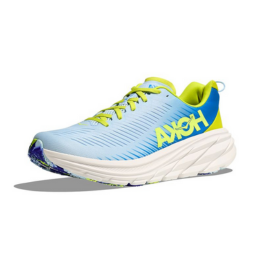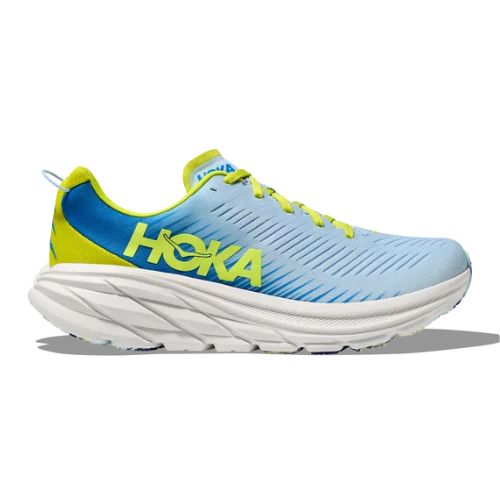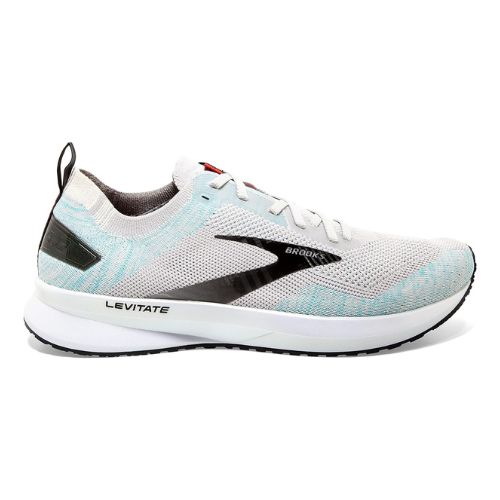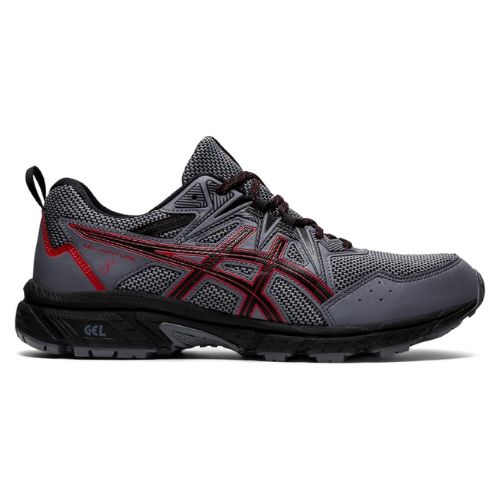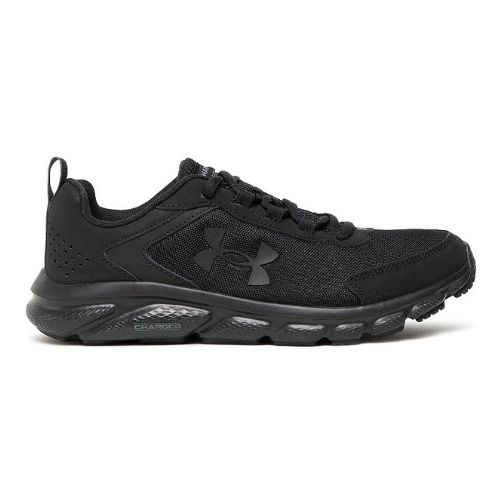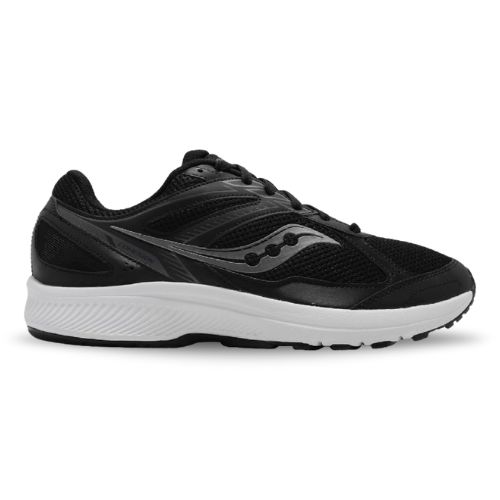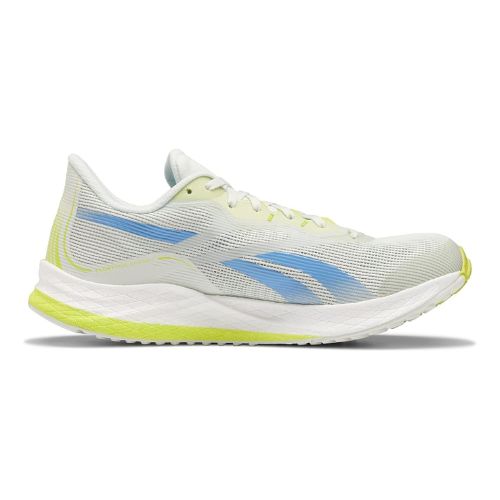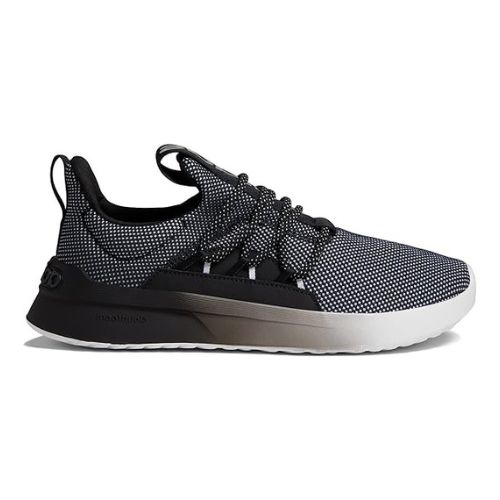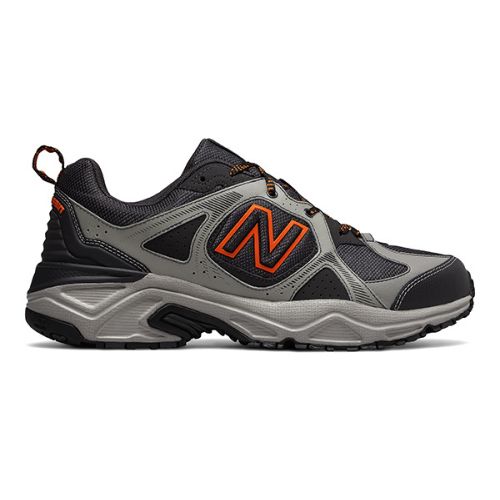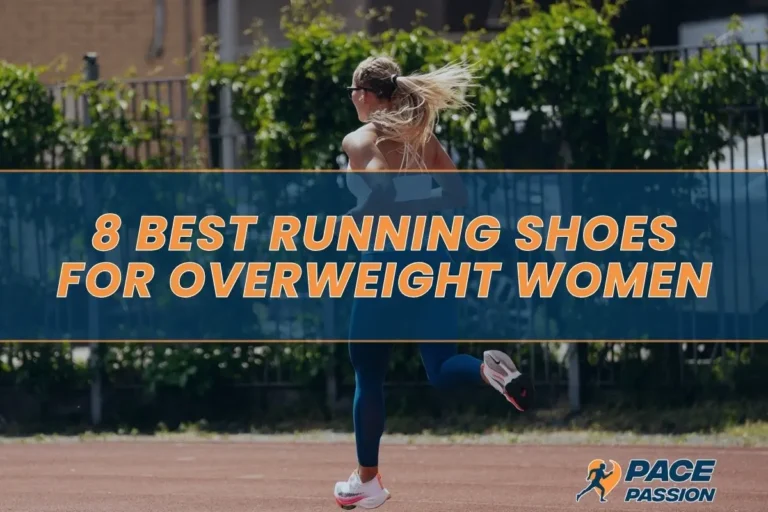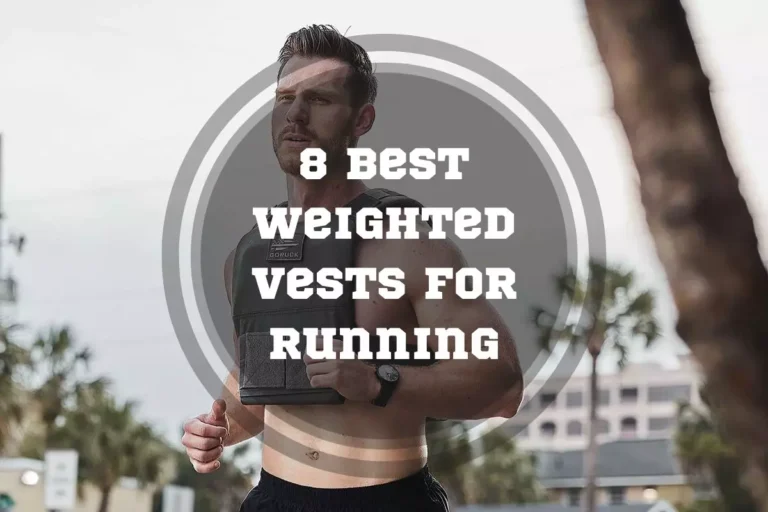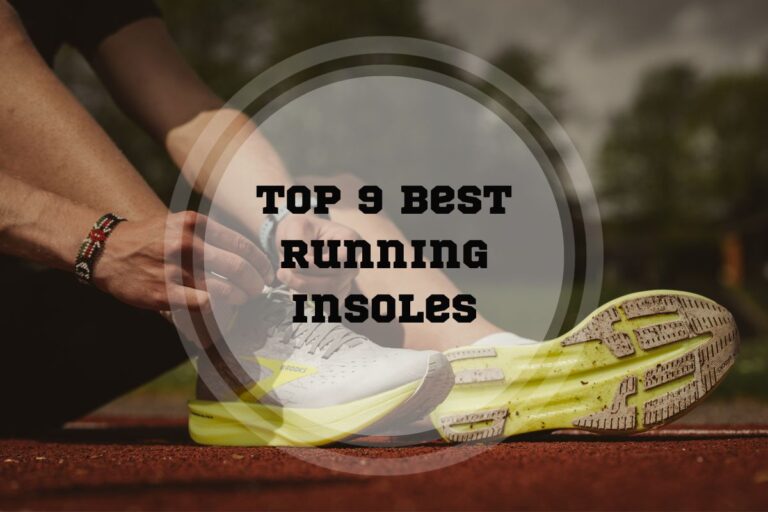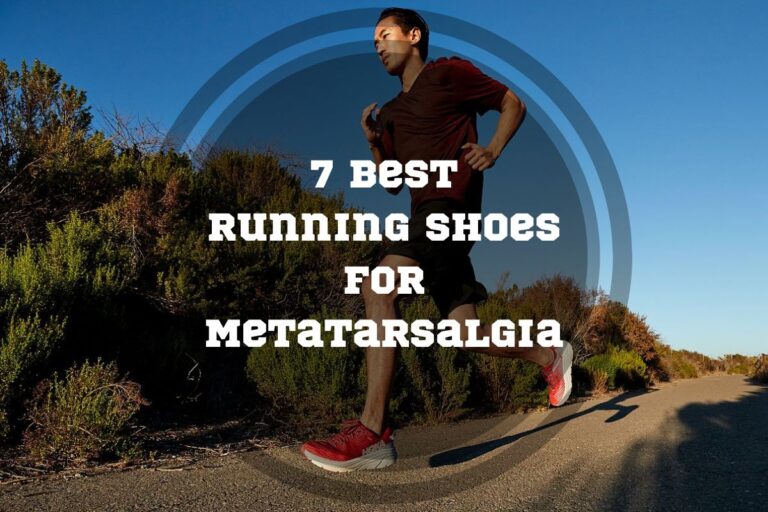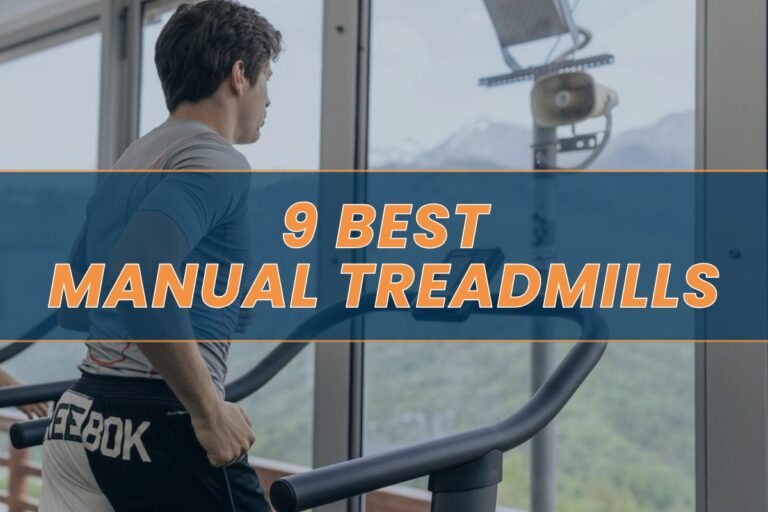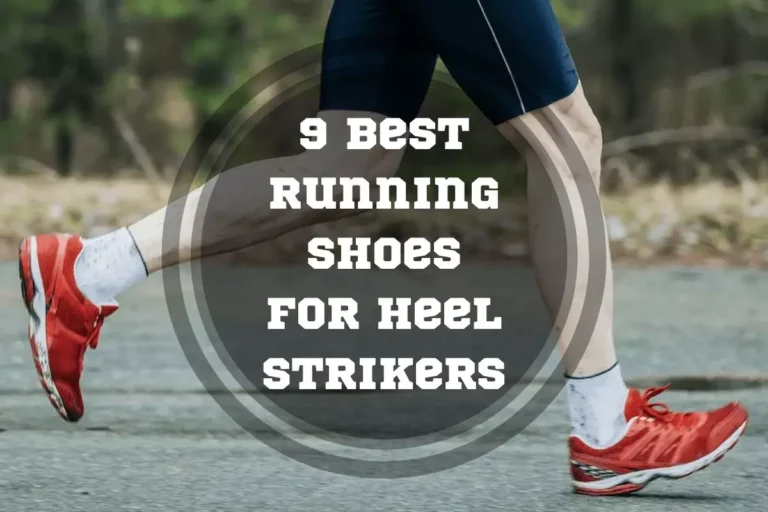8 Best Running Shoes for Older Men in 2025
Are you a runner who’s looking for the best running shoes for older men to give your feet comfort and performance? Running is a great way to stay in shape, no matter your age. But it’s important to have the right gear when hitting the trails or roads. That’s why we’ve created this comprehensive guide to eight of the best running shoes specifically designed for older men.
Our expert advice will help you choose wisely from all available options. Read on for more detailed information about what makes these running shoes stand out, as well as tips on how older men can run safely and comfortably.
In a Hurry? Skip to Our Pick
Hoka ONE ONE Men’s Running Shoes are designed for racing, trail running, and cross-training. Their superior cushioning makes them comfortable for older runners with joint pain or stiffness. These running shoes perfect choice to suit any runner.
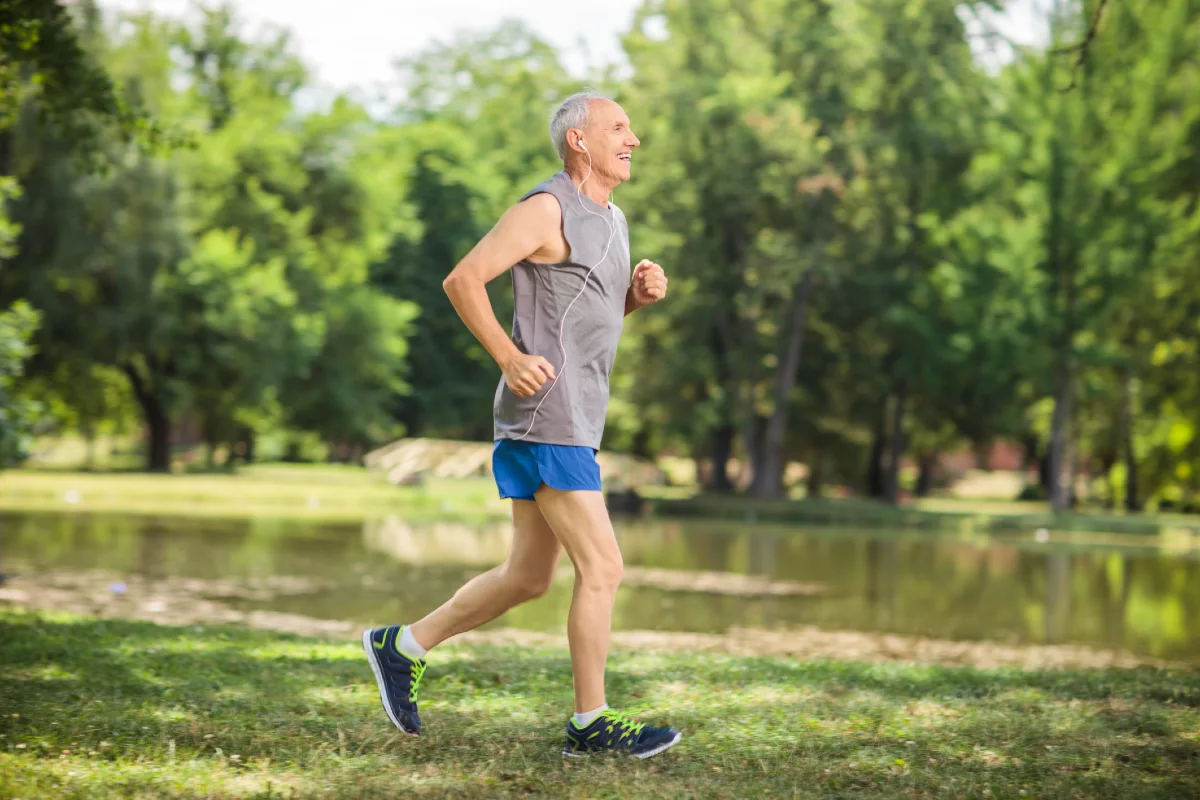
8 Best Running Shoes for Older Men Reviewed
- Hoka ONE ONE Men’s Running Shoes – Top Pick
- Brooks Men’s Levitate 4 Running Shoe – For Speed Runs
- ASICS Men’s Gel-Venture 8 Running Shoes – Budget Pick
- Under Armour Men’s Charged Assert 9 Running Shoe – Most Colors
- Saucony Men’s Cohesion 14 Road Running Shoe – The Most Durable
- Reebok Men’s Floatride Energy 3.0 Running Shoe – Carbon Rubber Outsole
- Adidas Men’s Lite Racer Adapt 5.0 Running Shoe – For Wide Fit
- New Balance Men’s 481 V3 Trail Running Shoe – For Everyday Running
We reviewed the highest-rated running shoes that are designed and created particularly for older male runners to ensure a comfortable, stable, and secure run. If you are looking for the best running shoes for a 50-year-old man, here are our favorite picks:
top running shoes for men: comparison of features and our assessment
| Product | Expert Score | Comfort | Traction | Durable | Weight | Cushioning | Breathability |
|---|---|---|---|---|---|---|---|
| Hoka ONE ONE | 4.9 | 5.0 | 4.9 | 4.9 | 5.0 | 5.0 | 4.9 |
| Brooks Levitate 4 | 4.9 | 5.0 | 4.9 | 4.9 | 4.9 | 5.0 | 4.9 |
| ASICS Gel-Venture 8 | 4.8 | 4.9 | 4.9 | 4.8 | 4.8 | 4.9 | 4.8 |
| Under Armour Charged Assert 9 | 4.7 | 4.8 | 4.8 | 4.7 | 4.8 | 4.8 | 4.8 |
| Saucony Cohesion 14 Road | 4.7 | 4.8 | 4.7 | 5.0 | 4.8 | 4.7 | 4.7 |
| Reebok Floatride Energy 3.0 | 4.6 | 4.6 | 4.7 | 4.9 | 4.8 | 4.7 | 4.7 |
| Adidas Lite Racer Adapt 5.0 | 4.6 | 4.8 | 4.7 | 4.6 | 4.7 | 4.6 | 4.7 |
| New Balance 481 V3 Trail | 4.6 | 4.8 | 4.5 | 4.6 | 4.6 | 4.7 | 4.6 |
1. Hoka ONE ONE Men’s Running Shoes
Top Pick
Hoka ONE ONE Men’s Running Shoes
Hoka men’s running shoes are specially designed to decrease overpronation without adding weight or unnecessary stiffness.
Comfort:
Traction:
Durable:
Weight:
Cushioning:
Breathability:
Expert Score:
Hoka men's running shoes are designed for racing, trail running, and cross-training. Their superior cushioning makes them comfortable for older runners with joint pain or stiffness. The lightweight foam soles provide much-needed stability during long-distance runs. These running shoes are available in 11 designs to suit men of all ages, whether you're in your 50s or 60s and run or walk.
- Material: Synthetic
- Sole material: Foam
- Outsole: Rubber
- Cushioning: Balanced
- Weight: 7.70oz
- Breathability: Good
- Size: 7.5-14
- Drop: 5mm
- Best for: Everyday run, walking
Pros:
- Maximum cushioning.
- Minimal weight.
- Easy pull-on
Cons:
- Pricey compared to other products.
2. Brooks Men’s Levitate 4 Running Shoe
For Speed Runs
Brooks Men’s Levitate 4 Running Shoe
Levitate 4 gives you the highest level of energy return, letting your feet spring off the ground and promoting efficient movement.
Comfort:
Traction:
Durable:
Weight:
Cushioning:
Breathability:
Expert Score:
The Brooks Men’s Levitate 4 offers great support and cushioning for older runners who need comfortable responsiveness from their shoes. It features the brand's highest level of cushioning (DNA AMP technology) in its midsole to provide long-lasting comfort during road runs.
The ultra-soft cushioning and breathable upper (the latter of which is available in 11 colors) provide additional comfort, while the reduced weight of 10.3 ounces makes it an ideal running shoe for elderly men. This product is a part of Brooks' flagship "Responsive" neutral road shoe for men lineup that helps stabilize balance and adds extra structural support to aging feet so they can comfortably enjoy running again.
- Material: Synthetic
- Sole material: Foam
- Outsole: Rubber
- Cushioning: Medium
- Weight: 10.3oz
- Breathability: Good
- Size: 7-15
- Drop: 8mm
- Best for: Everyday running, sprinting
Pros:
- Energized cushioning for energy return.
- Arrow-point outsole.
- Close-to-foot fit.
Cons:
- Some users find the tongue too large.
3. ASICS Men's Gel-Venture 8 Running Shoes
Budget Pick
ASICS Men's Gel-Venture 8 Running Shoes
The breathable mesh construction helps keep feet comfortably cool during intense runs, while the synthetic overlays offer extra stability and support.
Comfort:
Traction:
Durable:
Weight:
Cushioning:
Breathability:
Expert Score:
The ASICS Men's Gel-Venture 8 Running Shoes are designed with outdoor adventure in mind. They provide excellent cushioning, support, and durability for a variety of running exercises, ensuring comfort and performance.
These running shoes for old men come in 23 colors, including black/white, metropolis/black, and mantle green/black, so you can find just the right look to match your personal style.
- Material: Synthetic and mesh
- Sole material: Gel
- Outsole: Rubber
- Cushioning: Regular
- Weight: 12.5oz
- Breathability: Good
- Size: 7-15 (with X-wide options)
- Drop: 10mm
- Best for: Everyday running
Pros:
- Good shock absorption.
- Excellent traction.
- Perfect fit.
Cons:
- May cause discomfort in runners with high arches.
4. Under Armour Men's Charged Assert 9 Running Shoe
Most Colors
Under Armour Men's Charged Assert 9 Running Shoe
This running shoes for seniors has highly durable leather overlays for added stability, along with midfoot lockdown fit technology, which securely locks down your feet in place, preventing any slippage when running.
Comfort:
Traction:
Durable:
Weight:
Cushioning:
Breathability:
Expert Score:
The Under Armour Men's Charged Assert 9 Running Shoe is designed to ensure easy movement and a comfortable fit throughout your runs. It features a lightweight mesh upper that has been designed in 26 colors and provides breathability whilst keeping you cool.
The product also includes Under Armour’s EVA-based Charged foam in its construction, helping maximize cushioning across the entire foot area and providing greater bounce back under your feet as you run.
These old man running shoes come with an impressive wide width option, making them perfect for those with broader feet who might suffer from blisters or discomfort due to tight fitting shoes
- Material: Synthetic and leather
- Sole material: Foam
- Outsole: Rubber
- Cushioning: Soft
- Weight: 10.58oz
- Breathability: Good
- Size: 7-18 (with X-wide options)
- Drop: 10mm
- Best for: Everyday running
Pros:
- Comfortable to wear for extended periods of time.
- Great arch stability.
- Help reduce fatigue during intense exercise.
Cons:
- May need inserts for flat feet.
5. Saucony Men's Cohesion 14 Road Running Shoe
The Most Durable
Saucony Men's Cohesion 14 Road Running Shoe
The lightweight design and sticky outsole pattern make these running shoes perfect for those who want a comfortable fit and safe experience without compromising performance or feeling held back.
Comfort:
Traction:
Durable:
Weight:
Cushioning:
Breathability:
Expert Score:
The Saucony Men’s Cohesion 14 Road Running Shoe is a comfortable and supportive shoe that gets older men ready for the road. Engineered with VERSARUN cushioning, these innovative running shoes provides ample support and responsiveness, as well as a smooth stride from heel to toe.
This breathable and flexible pair of shoes is built with an upper mesh design and is available in 11 colors. It provides maximum comfort, stability control, air circulation, and a secure fit around the ankle area.
- Material: Leather and mesh
- Sole material: Foam
- Outsole: Rubber
- Cushioning: Medium
- Weight: 9.1oz
- Breathability: Good
- Size: 7-14 (with wide options)
- Drop: 12mm
- Best for: Everyday runs, long runs
Pros of Saucony Cohesion 14:
- Reduce pressure on the feet.
- Comfortable and secure fit.
- Long-lasting materials.
Cons of Saucony Cohesion 14:
- Some users find the fit a bit small.
6. Reebok Men's Floatride Energy 3.0 Running Shoe
Carbon Rubber Outsole
Reebok Men's Floatride Energy 3.0 Running Shoe
Fantastic performance features, such as a lightweight design, smooth ride, and versatile construction.
Comfort:
Traction:
Durable:
Weight:
Cushioning:
Breathability:
Expert Score:
For older men in search of the perfect running shoe, look no further than the Reebok Men's Floatride Energy 3.0 Running Shoe. This stylish and durable sneaker has an innovative square-knit upper and Floatride foam midsole for optimal cushioning, delivering support around every twist and turn of your run.
These shoes also provide great value at an affordable price point, making them a good option for any budget. Many testers who have worn these sneakers agree that they are incredibly comfortable and supportive. They allow runners to keep going longer while still providing maximum protection from impact through their cushioned midsole technology.
- Material: Synthetic and textile
- Sole material: Foam
- Outsole: Carbon rubber
- Cushioning: Medium
- Weight: 7-8oz
- Breathability: Good
- Size: 7-13
- Drop: 9-12mm
- Best for: Everyday running and walking
Pros:
- Breathable upper to keep your fit cool.
- Durable outsole.
- Cushioned comfort.
Cons:
- Some users find the fit too narrow.
7. Adidas Men's Lite Racer Adapt 5.0 Running Shoe
For Wide Fit
Adidas Men's Lite Racer Adapt 5.0 Running Shoe
These sneakers are designed with a wide fit to give you extra room in areas where your foot needs it most.
Comfort:
Traction:
Durable:
Weight:
Cushioning:
Breathability:
Expert Score:
The Adidas Men's Lite Racer Adapt 5.0 Running Shoe is the perfect choice for older men seeking comfort, flexibility, and style while on the go. These shoes boast a Cloudfoam midsole that's light and springy, ensuring maximum cushion with every step, regardless of whether you're out running or simply walking.
These support running shoes for men feature an ergonomically designed, cushioned sockliner and slip-on style so that putting them on and taking them off is as easy as can be! Their classic running-inspired design with 20 color options makes them great both for casual wear and activities such as running.
- Material: Synthetic and textile (50% recycled content)
- Sole material: Foam
- Outsole: Rubber
- Cushioning: Medium
- Weight: 9.5oz
- Breathability: Good
- Size: 6.5-14 (with wide options)
- Drop: 10mm
Pros:
- Stretchy and comfortable.
- Durable outsole for good traction.
- Very easy to take on and off.
Cons:
- Some users find the part around the ankle too tight.
8. New Balance Men's 481 V3 Trail Running Shoe
For Everyday Running
New Balance Men's 481 V3 Trail Running Shoe
These shoes are lightweight but still supportive enough to provide optimal stability at higher speeds and on uneven trail conditions.
Comfort:
Traction:
Durable:
Weight:
Cushioning:
Breathability:
Expert Score:
For men looking for a reliable running shoe, these New Balance shoes for elderly men are an ideal choice. Combining a rugged style (eight color choices) with an athletic fit and casual comfort, this outdoor performance shoe delivers all-day support and cushioning.
It has a neoprene collar lining for long-term durability, and its EVA midsole provides responsive cushioning to keep runners going. The upper mesh construction ensures breathability and quick moisture wicking to help feet stay cool during exercise in warm temperatures.
- Material: 50% leather, 50% mesh
- Sole material: Foam
- Outsole: Rubber
- Cushioning: Medium
- Weight: 16oz
- Breathability: Good
- Size: 7-16 (with X-wide options)
- Drop: 8mm
- Best for: All-terrain running
Pros:
- Comfort collar prevents irritation.
- Snug fit even for wide feet.
- Flexibility and support.
Cons:
- May need half-size more than your usual fit.
Is It Safe for Older Men to Run?
An elderly runner is typically considered to be anyone over the age of 50. This term can also include middle-aged runners between 40 and 49 who may require extra modifications when it comes to running.
Generally speaking, an elderly runner may have a slower response time, balance issues, reduced muscle control, and a lack of flexibility compared with their younger counterparts. As such, experts suggest that if elderly people want to take part in running (or any form of exercise), they need to pay more attention to personal safety and the prevention of injuries.
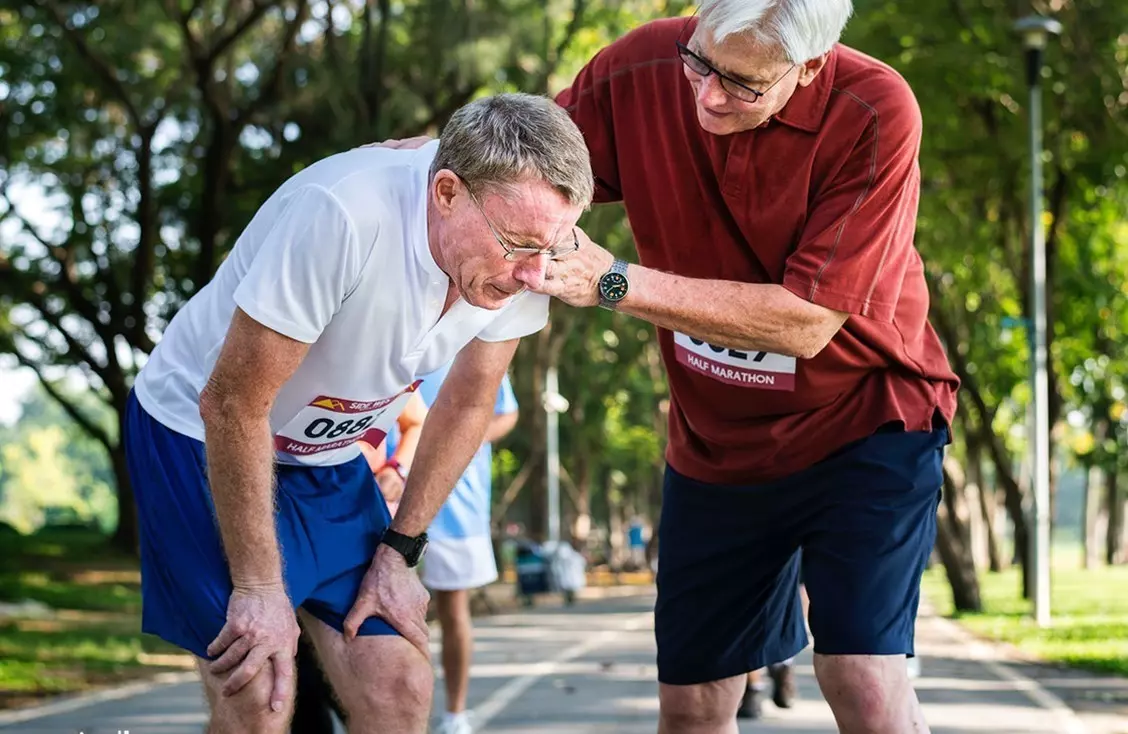
What Is the Danger of Running for Elderly Men?
Lower extremity injuries are the most common issue among runners, and seniors may also be more prone to these injuries due to reduced foot strength and flexibility, as well as poorer balance. Poor foot posture can also affect the joints in their legs, leading to increased pain or further injury.

Pro Tip:
To help prevent running-related issues, older runners should warm up properly before they start each run and pay attention to their breathing while running. If there is any sign of pain or discomfort, they should immediately stop the activity, even if they have not reached their goal distance yet.
Furthermore, aging runners should pay extra care when choosing surfaces for jogging since hard ground increases shock load. For example, a concrete surface may cause greater discomfort or harm for elderly bodies than softer terrain like grass and dirt.
Subscribe to Our Running Newsletter!
Get free running tips from renowned professional athletes and discounts from top-notch brands.
How Many Miles Can Older Runners Run Safely?
How many miles older runners can run safely depends on a few different factors. Older runners should replace their shoes every 300-400 miles, and need to take into account the terrain they are running on, as well as their weight
When it comes to everyday running, there are some general recommendations for different ages:
| Age | 40-50 | 50-60 | 60+ |
|---|---|---|---|
| Days/week | Every other day | 3 times a week | 2-3 times a week |
| Total miles per week | Up to 30 miles | Up to 22 miles | Up to 17 miles |
3 Advantages of Running for Older Men
Running can offer numerous benefits to men in their advanced years:
1. Heart Health
Running on a regular basis can help maintain cardiovascular health by improving blood circulation and reducing the risk of high blood pressure and heart attack.
2. Better Overall Health
Additionally, it can strengthen muscles throughout the body, regulate hormone levels, and lead to improved coordination and balance. Running also burns calories efficiently, which helps people manage the weight gain that often comes with aging.
3. Improved Mental Health
Running reduces stress hormones while increasing endorphins. As a result, older runners can improve their sleep and reduce anxiety.
4 Safety Tips for Elderly Men Who Run
It is important for older men to consider their safety when running in order to maximize performance and protect their bodies from overexertion. Here are four helpful safety tips:
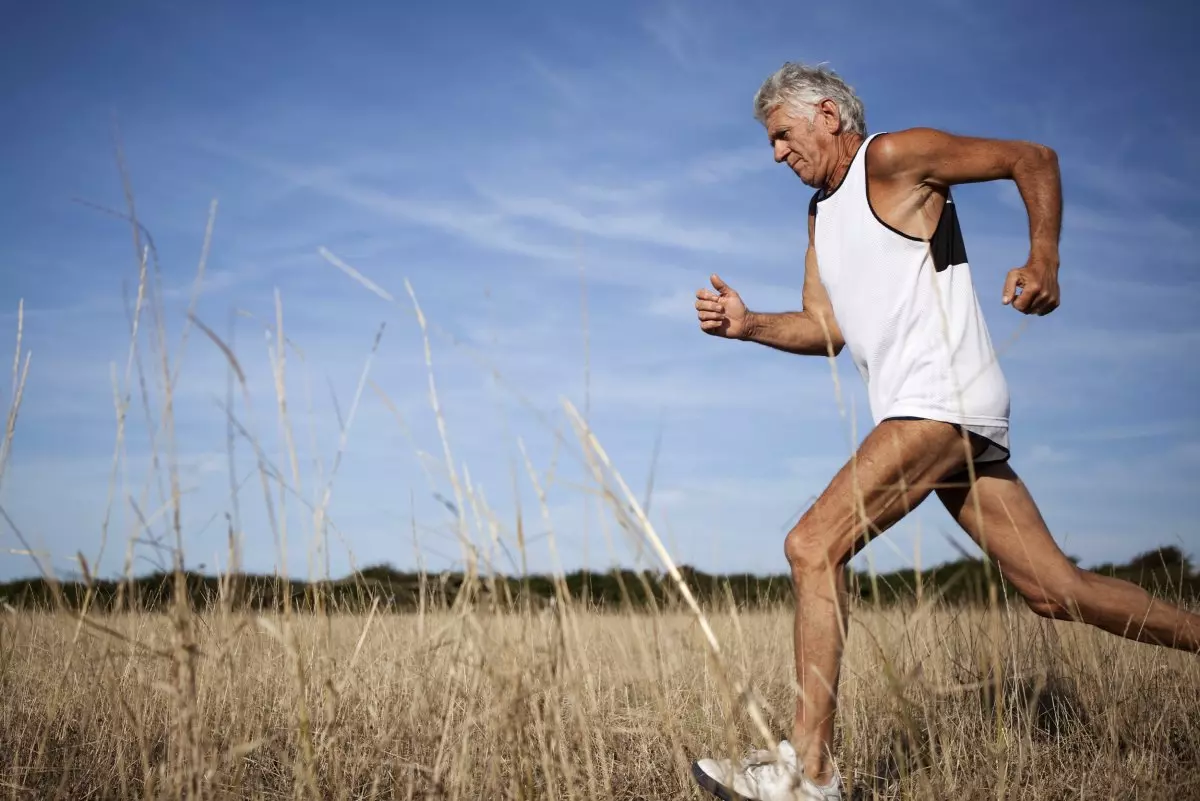
1. Know Your Limits
Older runners should assess their current levels of fitness, endurance, and energy before setting ambitious goals or signing up for races.
Although pushing yourself can be motivating and lead to great progress in terms of strength, agility, and speed, it is important to avoid risking injury due to overexertion. A proper warm-up is also necessary, as this helps prepare the body for physical activity and prevents potential injuries.
2. Mind Your Feet
For elderly men who are new to running, it is extremely important to take care of their feet. The most common issues that arise from running are blisters, corns, and calluses due to constant friction between the foot and the shoe.

Pro Tip:
To prevent these problems, seniors should look for a pair of shoes with enough cushioning and padding to provide protection against impact shock when they hit the ground. It’s also important to look for breathable uppers and wicking liners, as well as airflow around the foot.
3. Run on Softer Surfaces
Most traditional running courses consist of concrete or asphalt roads, which create a considerably higher impact on the hips and knees than softer terrain like dirt trails, grassy fields, etc.
This increased impact can cause bruises and other injuries for older runners, as their bodies are not as resilient. Running on softer surfaces helps reduce the strain on joints and allows for greater shock absorption with each footfall.
4. Build Strength
Strength training is an integral part of maintaining health and mobility for older adults who are looking to stay active. This type of exercise also helps improve balance, coordination, posture, and overall physical strength.
5 Tips for Choosing Running Shoes for Elderly Men and Seniors
When choosing running shoes for older runners, it is important to consider several factors:
1. Cushioning and Support
High levels of cushioning provide a softer surface as the feet strike the ground, absorbing shock from impact to help reduce stress on joints, which can lead to age-related conditions like osteoarthritis.
Cushioning works in tandem with supportive features such as arch support, stabilizing midsole materials such as ethylene vinyl acetate (EVA) foam, airbags designed for increased stability, and durable outsole components that minimize slips due to wet surfaces or loose terrain.
2. Stability and Balance
One way to ensure proper balance is by selecting the best running shoes for men over 50 customized with structures specifically manufactured for older feet.

Pro Tip:
Choose shoes that are specially constructed to offer ample cushioning to soften each stride while also controlling pronation levels due to their unique carving elements that help distribute pressure points evenly throughout the feet.
3. Proper Fit and Sizing
A snug yet comfortable fit with enough room in the toe box allows natural movement of the toes without discomfort or pain.
Getting a professional foot measurement will ensure that the shoes are the right size and width and offer a supportive base while running. Furthermore, it is important to choose running shoes with a secure heel that fits tightly but doesn’t slip off while in motion.
4. Lightweight and Flexible Design
Older runners are more prone to slipping hazards, which can lead to injury. Lightweight and flexible running shoes are easier to move in and offer better balance and gait support.
These features can help reduce fatigue while walking or running.
5. Breathability and Moisture-Wicking Properties
Breathable materials provide ventilation in the upper of the shoe, allowing for air circulation and absorbing sweat from your feet. This helps keep them cool while also controlling odor buildup.
Moisture-wicking material on the inner lining draws any built-up moisture away from the foot to prevent blisters or discomfort.
5 Basic Tips on How to Run Safely for Older Men
Getting older doesn’t mean that you have to stop running. In fact, studies have shown that older individuals can actually maintain strong running performance.
There is no specific age at which older runners should stop running. That being said, some elderly men might need to slightly modify their running routine to ensure they are running safely. Here are some tips to help you do that:
1. Start with a Proper Warm-Up
A warm-up helps to get the oxygen flowing and gets the muscles limbered up. It also reduces the risk of injury by giving muscles in the body time to slowly adjust to activity.
2. Listen to Your Body and Adjust Your Pace
Running with improper form, overstriding, and running too fast can all lead to injuries such as shin splints, muscle strains, and sprains in the lower body.
For this reason, is it important for older men to consistently assess their exertion levels and modify their pace accordingly. Knowing when to increase your speed and when to slow down is key for preventing injury during long runs.
The core principle behind Fartlek training is to allow the body to adapt to various speeds while increasing its overall fitness. Both high-intensity and low-intensity sessions can be utilized in Fartleks for an extensive workout routine.
3. Choose Safe Running Routes
Older runners should consider their routes carefully, choosing wisely between strenuous terrain and low-traffic roads with greater visibility.
Consider finding routes that provide scenic views and smoother paths for better impact absorption.
4. Take Rest Days and Prioritize Recovery
Allowing the body to heal not only helps prevent injuries caused by overuse, but can also improve your overall performance. Taking rest days gies your body an opportunity to relax and rebuild so that you're able to maximize future runs and workouts without risk of injury.
Engaging in active recovery activities on rest days is an ideal way to stay active while still taking time off from running and giving yourself the chance to recover properly.
5. Consult With a Health Care Professional Before Starting a Running Routine
Before beginning a running routine, it is essential for older men to consult with their health care professionals to ensure that the exercise is safe and appropriate for their individual health conditions.
A qualified doctor can provide personalized advice and guidance regarding any necessary adjustments or limitations. Not only will this help reduce the risk of injuries related to running, it can also be very beneficial in helping you get started.
Which Are Better for Older Men: Sneakers or Running Shoes?
When choosing the best footwear, seniors and older men should opt for shoes specifically designed for running. Running shoes have been engineered to provide cushioning and support to reduce the impact on your legs and feet.
The advantage that running shoes offer in comparison to sneakers is that they typically have extra cushioning, stability features, a secure midfoot fit, and a reinforced heel counter.
Running shoes are generally easier on your joints due to the high-quality materials used in their construction (memory foam or gel inserted into strategic parts, which adds additional protection against hard surfaces).
Frequently Asked Questions about the Best Running Shoes for Seniors
Do Older Runners Need More Cushioning?
Cushioning helps reduce strain and pain on the joints, which can often be a problem for seniors. Moreover, cushioned shoes offer support and comfort when running longer distances. Generally, the more cushioning a shoe has, the better it will be for older runners, as they are likely to experience improved stability and shock absorption due to the thicker midsole foam.
Are Hokas Good for Older Runners?
Hokas are highly praised for their cushioning and comfortable foam soles, making them a great choice for elderly runners. The wide platform of the midsole is designed to provide base level stability, ensuring that older feet remain stable when running over varied terrain.
After How Many Miles Should Older Runners Change Their Shoes?
Experts suggest that older runners (over 40 years old) should change their shoes every 300 to 400 miles, as the materials in the shoes tend to break down after a while.
Final Thoughts on the Best Running Shoes for Older Men
Finding the best running shoes for older men is a good way to keep yourself running safely. From cushioning, support, and stability to weight and responsiveness, there's a lot that goes into choosing the ideal pair of running shoes.
Fortunately, this comprehensive guide provides you with all the information you need to find premium, performance-oriented footwear specifically designed for mature runners.
The Hoka ONE ONE men's running shoe is our top pick today, due to their fit and reliable traction on various surfaces.
What running shoes do you like the most? Have you tried any of these products? Please share your experience in the comments below.
Also read:
- How to Run Slow
- Creatine for Runners
- Running 8 Miles
- How to Improve Running Cadence
- How to Keep Knee Brace From Sliding Down
- Lactic Acid in Runners
- What to Eat Before a 10K
- Is Running Good for Sciatica
- Chewing Gum While Running
References:
- Can the “Appropriate” Footwear Prevent Injury in Leisure-Time Running? Evidence Versus Beliefs // The Journal of Athletic Training: https://meridian.allenpress.com/jat/article/55/12/1215/446284/Can-the-Appropriate-Footwear-Prevent-Injury-in
- Characterising the biophysical properties of normal and hyperkeratotic foot skin // PMC: https://www.ncbi.nlm.nih.gov/pmc/articles/PMC4533794/
- Growing Stronger - Strength Training for Older Adults // Centers for Disease Control and Prevention: https://www.cdc.gov/physicalactivity/downloads/growing_stronger.pdf
- Shoe feature recommendations for different running levels: A Delphi study // PLOS: https://journals.plos.org/plosone/article?id=10.1371/journal.pone.0236047
- Effects of Balance Shoes on Balance and Postural Stability in the Elderly: A Crossover, Controlled, Randomized Single-Blind Study // MDPI: https://www.mdpi.com/2227-9032/9/2/179
- Running and jogging - preventing injury // Better Health Channel: https://www.betterhealth.vic.gov.au/health/healthyliving/running-and-jogging-preventing-injury
- How Older Adults Can Get Started With Exercise // NIH: https://www.nia.nih.gov/health/how-older-adults-can-get-started-exercise
Why Trust Us?
Pace Passion is committed to helping runners of all levels find the best product to improve their training and running performance. We use a comprehensive methodology for reviewing running and nutrition products for runners, so we only recommend products that we use ourselves or have had the opportunity to test. Read more about product testing here. Learn more about us here.
If you have any questions or suggestions, you can contact us via email – [email protected]

